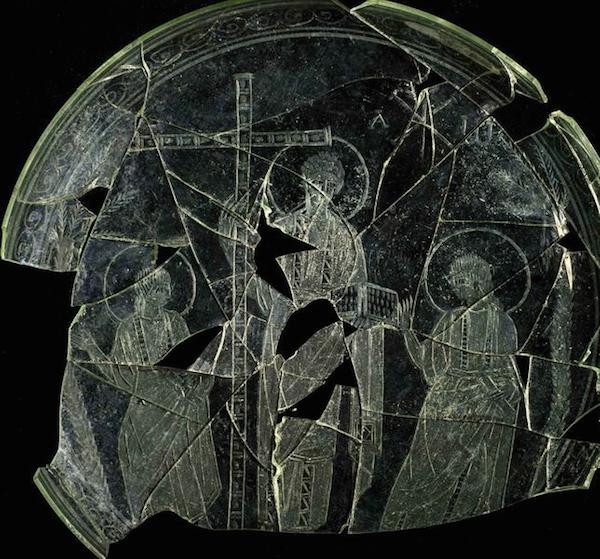
The discovery of a glass plate with an early depiction of Christ in Southern Spain could lead to a reconsideration of the history of Christianity in the country, El Mundo reports. The plate—which dates back to the 4th century—is a paten, a thin disk used during the Eucharist to serve the bread to be consecrated.
Until now, Christian Spain was thought to have begun in the 5th century, as the result of the arrival of the Christian Visigoths from central Europe and Byzantium.
“This discovery of the plate prompted a big discussion among the archeology group,” Marcelo Castro, director of the excavation project, told El Mundo. “We were afraid to say what we believed at first, because it forces us to rethink the chronology of Christian Spain.”
The glass plate—found in the small Andalusian town of Cástulo, in the province of Jaén—depicts Christ and the Apostles Paul and Peter in an early style, typical of the period when Christians emerged from clandestinity. The three men are clean-shaven and have short hair, unlike in later iconography. They are also wearing togas, in keeping with the Roman influence on early Christian art.
Coins and ceramic items found at the site seem to confirm that the plate coincided with the rule of Constantine, Rome’s first Christian emperor, who reigned from 306 to 337, the Guardian reports. Prior to the empire of Constantine, Christians were persecuted, so the figure of Christ was presented allegorically, often in the form of a fish.